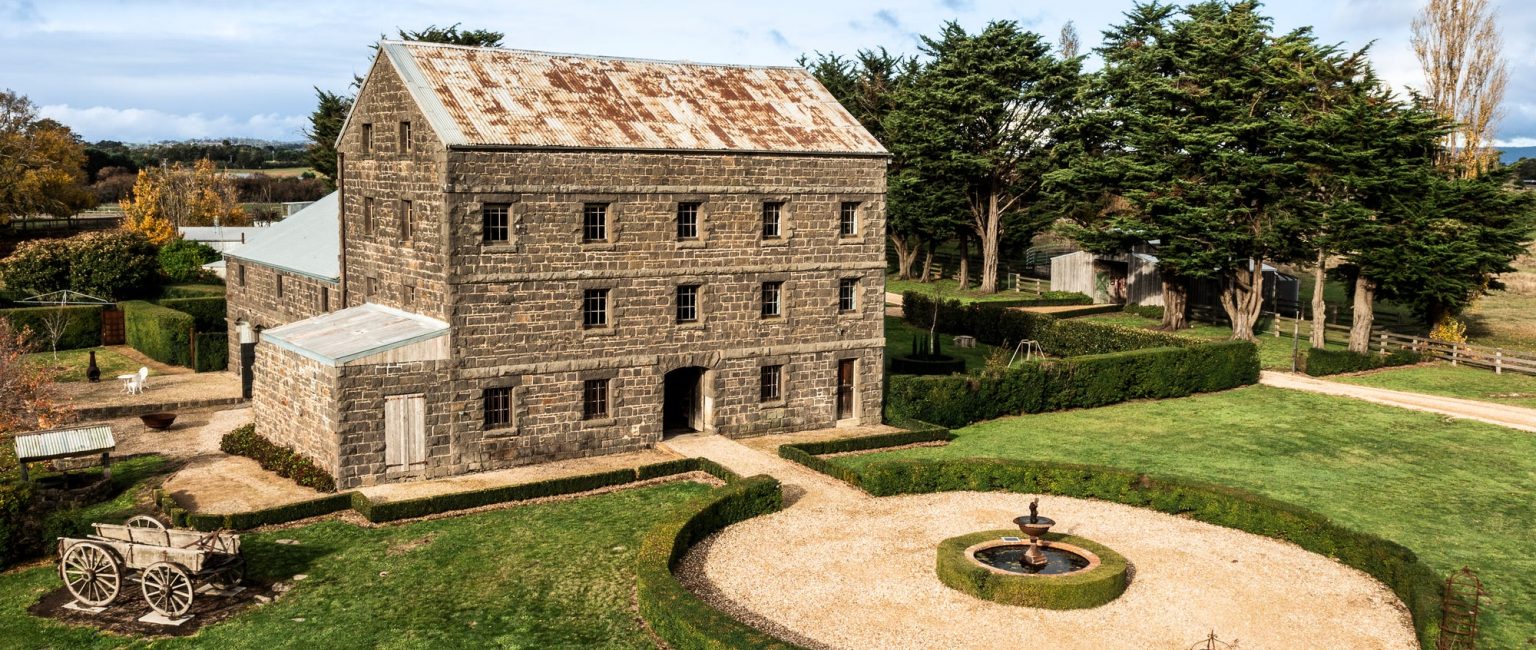Heritage commercial properties for sale in Australia in 2022

Australia’s unique past is sometimes quite literally put on the market when heritage-listed properties or sites of historical significant are listed for sale as commercial properties.
So, what makes a property historically significant and why are they so often turned into commercial properties?
Also, what does a heritage listing mean for those who wish to buy these properties?
Jump to these sections:
What does a heritage listing mean?
Types of heritage-listed properties commonly listed for sale
Heritage-listed commercial properties currently on the market
Important sites that aren’t heritage listed
What does a heritage listing mean?
Places of historical significance in Australia that are on the National Heritage list, which is managed by the Australian Heritage Council, or those on the World Heritage List, are protected under federal legislation.
Each state and territory also has its own heritage authority, which classifies properties based on things like the age of the property, the architectural style it represents, how the site contributes to an understanding of the area’s history, and how rare it is relative to other surviving properties from that era.
A national, state or world heritage listing will mean that owners are required to seek permits and permissions that require only certain materials or specialist tradespeople can be used when repairing or making any changes to those protected properties.
Sites and properties listed with councils as areas of local heritage significance are subject to local planning laws and require permits to be changed, repaired, or renovated, though this level of heritage protection is lower than a state, national or world heritage listing.
Types of heritage-listed properties commonly listed for sale
Large estates or grand mansions that were once owned by wealthy families are among the heritage-listed properties commonly sold in Australia.
These properties once employed large numbers of people to work as maids, servants, gardeners, groomsmen, shearers, fruit pickers, cooks and the like. Often the family who owned the property prospered, but some of those they employed would have worked for little financial reward.
Then there are properties with a dark past that are linked to our nation’s convict past or were once homes to medical institutions.
Our nation’s early industrial past has also created heritage sites that were once used to store goods before they were exported and other locations that were home to gold-rush era business like this mining stock exchange.
The nation’s social history is also something that comes up with the sale of commercial properties such as this iconic milkbar or this hall in Sydney where back in the day many a couple met at dances held on a Saturday night.
The upkeep of these properties are often at least partially funded through various commercial enterprises such as tours, cafes, restaurants, weddings, being used for filming locations or photographic shoots, short term accommodation and functions.
Heritage-listed commercial properties currently on the market
Looking for a commercial property with history? Take a look at these heritage-listed properties currently for sale.
London & Lancashire Building
This 1865 building in Collins St, Melbourne was designed by architect Austin & Ellis and it was originally the Melbourne headquarters of the Australasian Insurance. It then became home to the London & Lancashire Insurance Co.

The seven-storey building is situated amongst many other major office towers. Picture: realcommercial.com.au/for-sale
The property was extensively refurbished in 2013 which resulted in a 4.5 NABERS rating and six of the seven storeys have been leased out to whole floor tenants.
It is for sale via an expressions of interest campaign.
London & Lancashire Building: details
Address:400-402 Collins St, Melbourne
Price guide: $35 million
Campaspe Mill
Built in 1856-57 for William De Graves, this three-storey former bluestone mill was once part of a flourishing industry when Victoria was home to up to 300 flour mills, many of which were powered by steam.

The former mill is now home to a four-level, completely renovated residence. Picture: realcommercial.com.au/for-sale
This local landmark, also known as Wards Mill, is one of few to survive to the present day. There is a heritage overlay attached to the 13.89ha site which also includes manicured gardens, a stable with a tack room, and a separate smaller homestead.
The 1564sqm mill was turned into a family home beginning in the late 1990s and the Georgian style structure can be either a residence or commercial property.
Campaspe Mill: details
Address: 2 Wards Lane, Kyneton
Price guide: $5.8-$6.3 million
Chateau Yering (EOI campaign has closed)
Built in 1854, this 32-room mansion was once part of the estate which produced Victoria’s first wine vintage in 1845.
Now a luxury hotel and functions centre the 101.8 ha site comes with DA approval for additional guest rooms, a freestanding reception venue, an indoor pool with spa facilities and a wedding chapel.

The property is a prime tourism destination with river frontage in the heart of the Yarra Valley. Picture: realcommercial.com.au/for-sale
It is being sold via an expressions of interest campaign.
Chateau Yering mansion: details
Address: 42 Melba Highway, Victoria
Price guide: $20 million
Willoughby & Co Woolstores (EOI campaign has closed)
Built in 1940, this commercial property was created for Willoughby & Co, Importers & Investors to store wool and was part of Brisbane’s exporting infrastructure which by the late 1940s was worth £20,000,000.
The A-grade asset has a modern interior and 4 star NABERS energy rating. It is 97% occupied by Nova Entertainment.
It is for sale via an expressions of interest campaign.

Willoughby & Co Woolstores: details
Address: 130 Commercial Road, Tenerife
Important sites that aren’t heritage listed
It is worth remembering that while many of the sites that communities wish to conserve relates to the early days of the colonies that made up Australia, our nation’s history didn’t begin with white settlement.
Australia is home to the world’s oldest living culture and is made up of many distinct Indigenous and Torres Strait Islander communities each with their own unique language, history and culture that dates back thousands of years.
Some of these sites of cultural and historical importance to First Nations communities are on the world, national or state heritage lists, but many of these sites are not legally protected unlike properties built since 1788.
Rio Tinto’s destruction of two of the 46,000-year old Juukan Gorge rock shelters in the Pilbara region of WA in 2020 highlighted the need for legislation to preserves sites sacred to the First Nations that make up the world’s oldest living culture.







